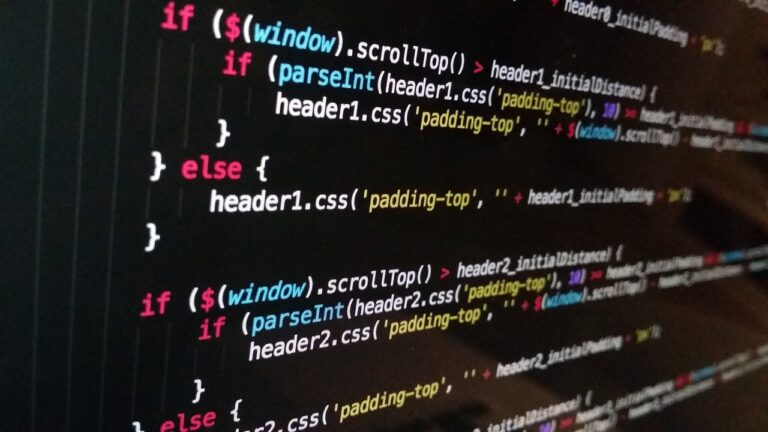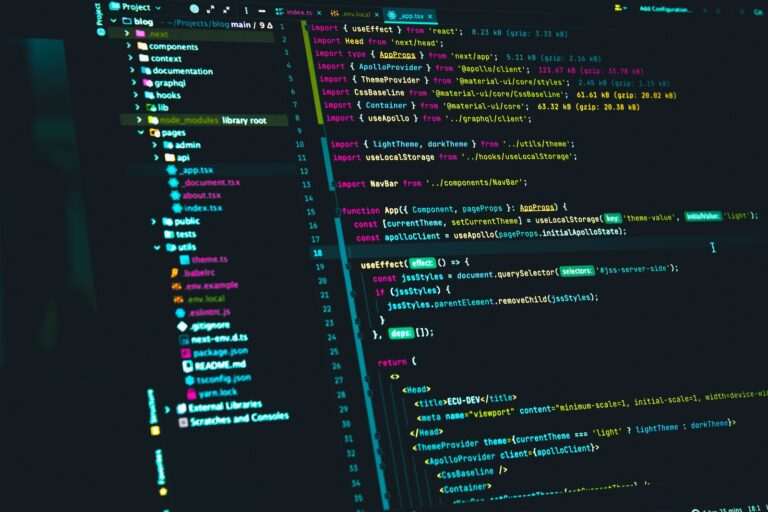As a web developer, the Document Object Model (DOM) is a fundamental concept you need to understand. It is the programming interface for HTML and XML documents, and it represents the structure of a web page as a tree-like model. Manipulating the DOM is essential for creating dynamic and interactive web pages.
Vanilla JavaScript is a powerful tool for manipulating the DOM. It enables you to manipulate HTML elements, change their content, attributes, and styles, and dynamically add or remove elements from the DOM. With Vanilla JavaScript, you can create dynamic web content, handle user input, and update the DOM in response to events.
Key Takeaways
- DOM manipulation is the process of interacting with and modifying HTML elements.
- Vanilla JavaScript is an ideal tool for DOM manipulation, offering performance benefits, simplicity of code, and reduced reliance on external libraries like jQuery.
Understanding the Document Object Model (DOM)
The Document Object Model (DOM) is a programming interface for web documents. It represents the page so that programs can change the document structure, style, and content. The DOM represents the HTML document as a tree structure, with each tag represented by a node in the tree.
Developers can use the DOM to manipulate web pages in a dynamic and interactive way. By understanding the structure and behavior of the DOM, developers can create scripts that dynamically modify the content and structure of web pages in real-time.
There are several techniques available for DOM manipulation, including:
- Selecting elements by tag name, class, or ID
- Modifying the content, attributes, or styles of existing elements
- Creating new elements and adding them to the DOM
- Removing elements from the DOM
One of the key benefits of DOM manipulation is the ability to create dynamic web content that responds to user input or other events. For example, a script could modify the content of a web page in real-time based on user selections or input.
DOM Manipulation Techniques
Here are a few techniques for manipulating the DOM:
| Method | Description |
|---|---|
| document.getElementById() | Selects an element by its ID |
| document.getElementsByTagName() | Selects elements by tag name |
| document.getElementsByClassName() | Selects elements by class name |
| element.innerHTML | Modifies the content of an element |
| element.setAttribute() | Modifies the value of an attribute for an element |
| element.style.property | Modifies the CSS style of an element |
Developers can also create new elements using the document.createElement() method and add them to the DOM using the appendChild() method. Similarly, elements can be removed from the DOM using the removeChild() method.
Accessing HTML Elements with Vanilla JavaScript
In order to manipulate the Document Object Model (DOM) using Vanilla JavaScript, it is important to know how to access HTML elements. There are several methods for selecting HTML elements in the DOM using JavaScript. Here are some commonly used methods:
| Method | Description |
|---|---|
| getElementById() | Selects an element based on its ID attribute |
| getElementsByClassName() | Selects elements based on their class attribute |
| getElementsByName() | Selects elements based on their name attribute |
| getElementsByTagName() | Selects elements based on their tag name |
| querySelector() | Selects the first matching element based on a CSS selector |
| querySelectorAll() | Selects all matching elements based on a CSS selector |
Here is an example that demonstrates how to use some of these methods:
// Select an element by ID and change its text
var element = document.getElementById(“myElement”);
element.innerHTML = “Hello, world!”;
The getElementById() method selects an element with the ID of “myElement”. We then use the innerHTML property to change the text content of the element to “Hello, world!”.
The querySelector() method can be used to select elements based on CSS selectors. Here is an example:
// Select the first paragraph element and change its class
var element = document.querySelector(“p”);
element.className = “newClass”;
This code selects the first paragraph element on the page and changes its class to “newClass”.
Modifying HTML Elements with Vanilla JavaScript
Once you’ve selected an HTML element using JavaScript, it’s time to start modifying it. Here are some of the most common DOM manipulation methods:
| Method | Description |
|---|---|
| innerHTML | Changes the content between the opening and closing tags of an element. |
| setAttribute() | Adds or changes an attribute of an element. |
| style.property | Changes the style attribute of an element. |
| createElement() | Creates a new HTML element. |
| appendChild() | Adds a new child element to an existing element. |
| removeChild() | Removes a child element from an existing element. |
Let’s take a closer look at some of these methods:
innerHTML
The innerHTML property allows you to change the content within the opening and closing tags of an element. For example, if you wanted to change the content of a paragraph element with an ID of “example”, you could use the following code:
document.getElementById("example").innerHTML = "New content";
setAttribute()
The setAttribute() method allows you to add or change an attribute of an element. For example, if you wanted to change the source of an image element with an ID of “example”, you could use the following code:
document.getElementById("example").setAttribute("src", "newimage.jpg");
createElement() and appendChild()
The createElement() method allows you to create a new HTML element, while the appendChild() method allows you to add a new child element to an existing element. For example, if you wanted to add a new paragraph element to a div element with an ID of “example”, you could use the following code:
var newParagraph = document.createElement("p");
var paragraphText = document.createTextNode("New paragraph");
newParagraph.appendChild(paragraphText);
document.getElementById("example").appendChild(newParagraph);
This code creates a new paragraph element, adds text to it, and then adds the new paragraph as a child element of the div with the ID “example”.
By using these and other DOM manipulation methods, you can dynamically modify HTML elements to create the desired user experience on your website.
Creating Dynamic Web Content with DOM Manipulation
DOM manipulation allows developers to create dynamic web content that responds to user interaction and updates in real-time. By manipulating the Document Object Model (DOM), you can change the structure, content, and appearance of a web page without having to reload the entire page.
One powerful technique is generating HTML elements dynamically in response to user input. For example, you could create a form that allows users to add new items to a list by clicking a button. When the button is clicked, a new list item is created and added to the DOM using JavaScript.
| DOM Manipulation Technique | Description |
|---|---|
| Event Handling | By attaching event listeners to HTML elements, you can trigger JavaScript code when a user interacts with the page, such as clicking a button or submitting a form. |
| Creating Elements | You can use JavaScript to dynamically create HTML elements and add them to the DOM. |
| Updating Elements | You can change the content, appearance, and attributes of HTML elements using DOM manipulation techniques. |
Another useful technique is updating the DOM in response to events. For example, you could create a button that toggles the display of a hidden element when clicked. When the button is clicked, JavaScript code can update the CSS of the element to show or hide it.
Overall, DOM manipulation is a powerful tool for creating dynamic web content that responds to user actions. By mastering the techniques covered in this article, you can create engaging and interactive web pages that keep users coming back for more.
The Power of Vanilla JavaScript for DOM Manipulation
Vanilla JavaScript is an incredibly powerful tool for manipulating the Document Object Model (DOM). By using simple, native JavaScript code, developers can interact with and modify HTML elements in a way that is fast, efficient, and easy to maintain.
One of the key advantages of using Vanilla JavaScript for DOM manipulation is the performance benefits. Unlike external libraries like jQuery, which can slow down a page’s load time, Vanilla JavaScript code runs directly in the browser, making it lightning fast and highly responsive.
Another advantage is the simplicity of code. By relying on native JavaScript methods and functions, developers can write cleaner and more concise code that is easier to read and understand. This can be especially helpful when working on large-scale projects with multiple developers.
Finally, using Vanilla JavaScript for DOM manipulation reduces reliance on external libraries. While these libraries can provide useful shortcuts and additional functionality, they can also be a burden when it comes to maintenance and updates. By sticking to native JavaScript, developers can ensure their code remains flexible and adaptable, even as browser technologies continue to evolve.
Transitioning from jQuery to Vanilla JavaScript for DOM Manipulation
As web development continues to evolve, using Vanilla JavaScript for DOM manipulation is becoming an increasingly popular choice. While jQuery is still widely used, many developers are finding that Vanilla JavaScript provides a more lightweight, flexible, and efficient solution.
If you’re considering transitioning from jQuery to Vanilla JavaScript, it’s important to understand the differences between the two approaches. While jQuery provides a simplified syntax and easy-to-use methods, it can also be slower and less customizable than Vanilla JavaScript. In contrast, Vanilla JavaScript offers a more direct and customizable approach, but with a steeper learning curve.
If you’re ready to make the switch, here are some tips to help you transition smoothly:
- Start by identifying the jQuery methods you use most frequently. Take note of the methods you use most frequently in your code, such as selectors, event handlers, and animations.
- Learn the Vanilla JavaScript equivalents. Once you’ve identified the methods you use most, research the Vanilla JavaScript equivalents and become familiar with their syntax and usage.
- Refactor your code gradually. Instead of rewriting your entire codebase at once, start by refactoring small sections of your code using Vanilla JavaScript. This will help you get comfortable with the new syntax and avoid overwhelming yourself.
- Use feature detection to ensure cross-browser compatibility. Vanilla JavaScript provides more flexibility in terms of browser compatibility, but it’s still important to use feature detection to ensure your code works across all major browsers.
- Optimize your code for performance. Vanilla JavaScript can be faster than jQuery, but it’s important to optimize your code for performance by minimizing DOM manipulations and avoiding unnecessary function calls.
By following these tips, you can make a smooth transition from jQuery to Vanilla JavaScript, unlocking the full potential of this powerful web development tool.
A Step-by-Step DOM Manipulation Tutorial
In this section, we will go through a step-by-step tutorial for DOM manipulation using Vanilla JavaScript. We will cover various techniques discussed in earlier sections and provide practical examples to help you understand and apply the concepts. By the end of this tutorial, you should be comfortable with manipulating the DOM using Vanilla JavaScript and able to create dynamic web content.
Step 1: Selecting HTML elements
The first step in DOM manipulation is selecting the HTML element(s) you want to manipulate. You can select elements using different methods, such as by ID, class, tag name, or attribute. Let’s start by selecting an element by ID:
| Method | Example |
|---|---|
| getElementById() | document.getElementById("my-element") |
In the example above, we select an element with the ID “my-element” using the getElementById() method. You can use this method to select elements with a specific ID attribute.
Step 2: Modifying HTML elements
Once you have selected an HTML element, the next step is to modify it. You can modify different aspects of an element, such as its content, attributes, or style. Let’s see an example of changing an element’s content:
| Method | Example |
|---|---|
| innerHTML | document.getElementById("my-element").innerHTML = "New content"; |
In the example above, we change the content of an element with the ID “my-element” using the innerHTML property. You can use this property to set or get the HTML content of an element.
Step 3: Creating HTML elements
Sometimes, you might need to create new HTML elements dynamically. You can create new elements using the createElement() method and add them to the DOM using methods like appendChild(). Let’s create a new <p> element and add it to the page:
| Method | Example |
|---|---|
| createElement() | var p = document.createElement("p"); |
In the example above, we create a new <p> element using the createElement() method and add it to the end of the <body> element using the appendChild() method.
Step 4: Handling user input
DOM manipulation is often used to handle user input, such as mouse clicks or keyboard events. You can listen for events using methods like addEventListener() and execute functions in response to them. Let’s see an example of handling a button click:
| Method | Example |
|---|---|
| addEventListener() | var button = document.getElementById("my-button"); |
In the example above, we add a listener to a button element with the ID “my-button” using the addEventListener() method. When the button is clicked, the function inside the listener is executed, logging a message to the console.
Step 5: Updating the DOM in response to events
You can use DOM manipulation to update the page in response to events. For example, you might want to change the content or style of an element when the user hovers over it. Let’s see an example of changing an element’s style on hover:
| Method | Example |
|---|---|
| addEventListener() | var element = document.getElementById("my-element"); |
In the example above, we add two listeners to an element with the ID “my-element” using the addEventListener() method. When the user hovers over the element, the mouseover listener changes the element’s color to red, and when the mouse leaves the element, the mouseout listener changes the color back to black.
Now that you have completed this tutorial, you should have a good understanding of DOM manipulation using Vanilla JavaScript. Keep practicing and experimenting with new techniques to create dynamic and engaging web content!
Conclusion
As we have seen throughout this article, mastering DOM manipulation techniques is an essential skill for any web developer. By understanding the structure of the Document Object Model (DOM) and utilizing Vanilla JavaScript, developers can easily access and modify HTML elements, creating dynamic web content and enhancing user experience.
There are many benefits to using Vanilla JavaScript for DOM manipulation, including improved performance, simplicity of code, and reduced reliance on external libraries like jQuery. While transitioning from jQuery to Vanilla JavaScript may seem daunting at first, the rewards are well worth the effort.
Continuing Your Learning Journey
Now that you have a solid foundation in DOM manipulation techniques, we encourage you to continue exploring and practicing your skills. Consider experimenting with different approaches and techniques, and don’t be afraid to ask for help or seek out additional resources.
Whether you are building a simple website or a complex web application, mastering DOM manipulation techniques is key to creating dynamic and engaging user experiences. So keep learning, keep growing, and keep building!







